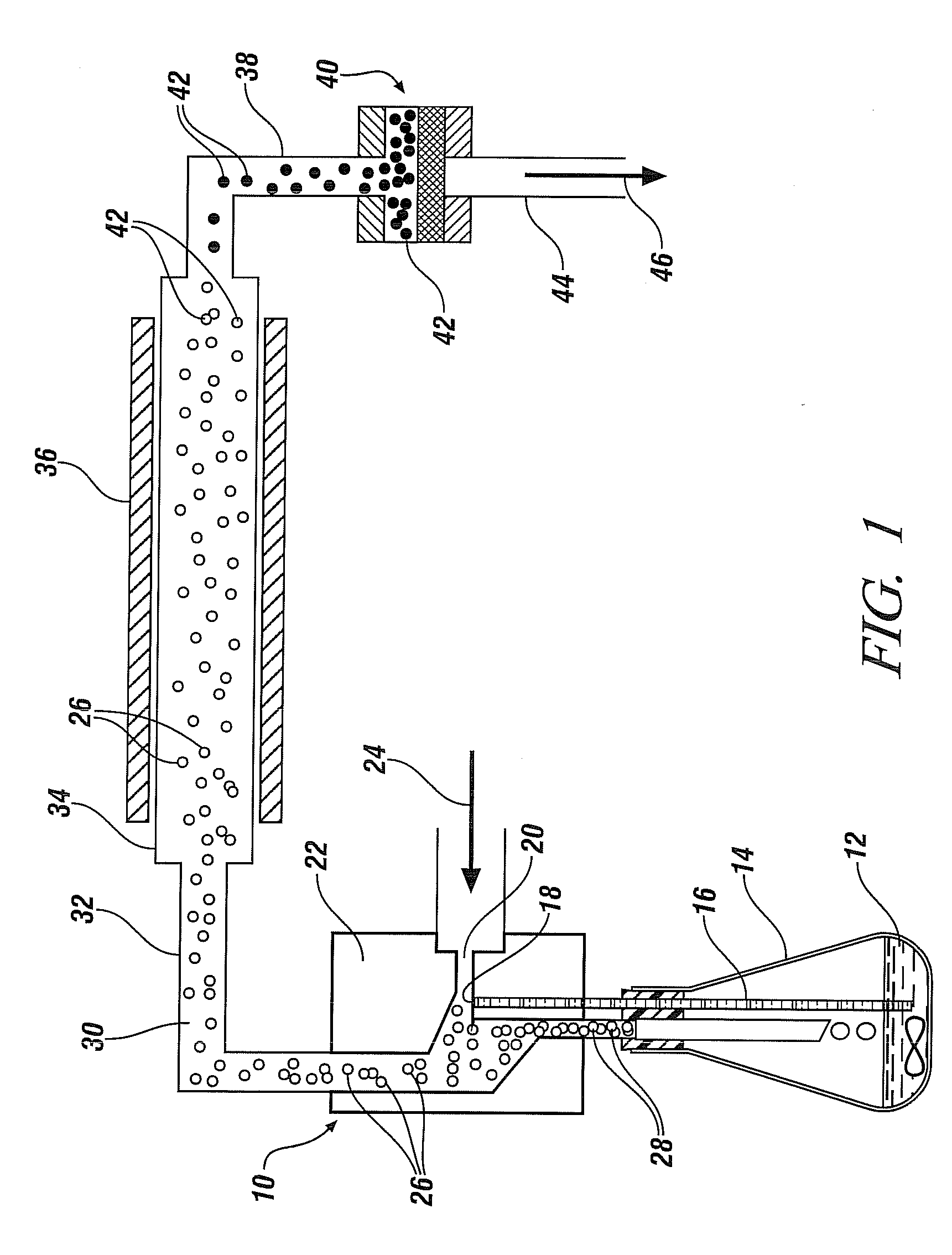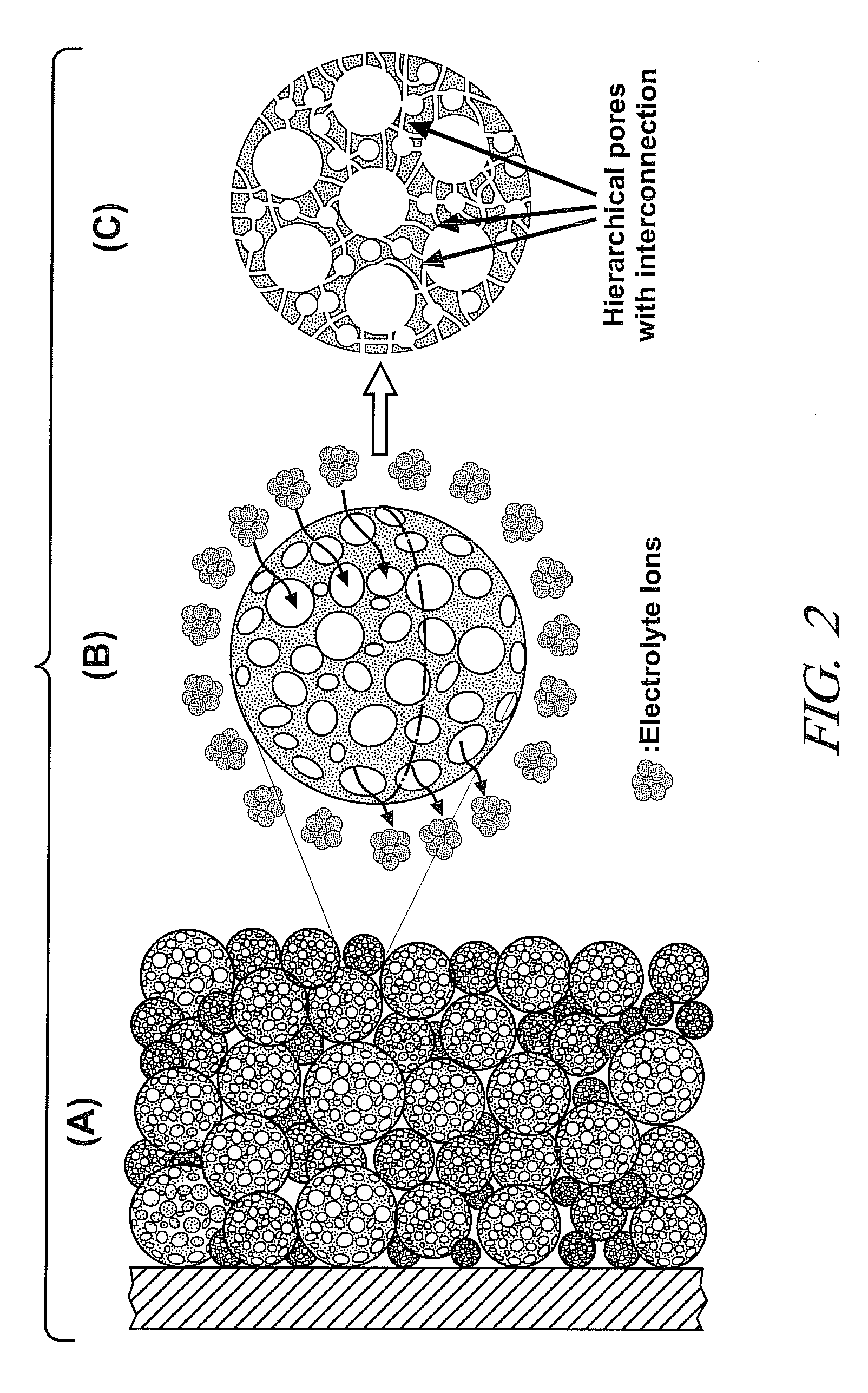Hierarchially porous carbon particles for electrochemical applications
a technology of graphite carbon spheres and porous carbon particles, applied in the field of porous graphite carbon spheres for graphite carbon spheres, can solve the problems of radically deteriorating storage performance, limited energy density by its effective double-layer area, and limited current supercapacitors, etc., to achieve low rate capability, low capacitance, and high surface area
- Summary
- Abstract
- Description
- Claims
- Application Information
AI Technical Summary
Benefits of technology
Problems solved by technology
Method used
Image
Examples
Embodiment Construction
Synthesis of Porous Graphitized Carbon Nanoparticles
[0017]For the synthesis of the graphitized carbon particles, aqueous solutions were prepared containing 40 mL of de-ionized water, 12 g of sucrose, 10 g of nickel nitrate hexahydrate (Ni(NO3)2.6H2O), 20 g of 0.1 M HCl, 20 g of colloidal silica particles (AS 30%, Nissan Chemicals. Inc.), and 16 g of tetraethylorthosilicate (TEOS, as silicate templates). Quantities of the solution were placed in an atomizer as illustrated in FIG. 1.
[0018]FIG. 1 is a schematic drawing, partly in cross-section, illustrating the use of a commercial laboratory size atomizer 10 (Model 3076, TSI, Inc. St. Paul, Minn.) operated with nitrogen as a carrier / atomization gas. This atomizer produces aerosol droplets with a size distribution characterized by a geometric standard deviation of 2 (95% of the liquid particles have diameters between 0.25 and 4 times the mean diameter).
[0019]A solution of sucrose carbon precursor with nickel nitrate carbonization cataly...
PUM
| Property | Measurement | Unit |
|---|---|---|
| temperature | aaaaa | aaaaa |
| temperature | aaaaa | aaaaa |
| diameters | aaaaa | aaaaa |
Abstract
Description
Claims
Application Information
 Login to View More
Login to View More - R&D
- Intellectual Property
- Life Sciences
- Materials
- Tech Scout
- Unparalleled Data Quality
- Higher Quality Content
- 60% Fewer Hallucinations
Browse by: Latest US Patents, China's latest patents, Technical Efficacy Thesaurus, Application Domain, Technology Topic, Popular Technical Reports.
© 2025 PatSnap. All rights reserved.Legal|Privacy policy|Modern Slavery Act Transparency Statement|Sitemap|About US| Contact US: help@patsnap.com



